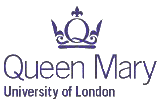
SCM Syllabus
Syllabus
Optical measurements. Observation of optical interference and its use in precision measurements.
Electrical measurements. Construction of simple electronic circuits and measurement of their properties.
Linear and non-linear behaviour. Investigation of non-linear behaviour using low and high precision measurement techniques.
Nucleonic measurements. Use of radioactive isotopes to study the properties of the Poisson distribution and to demonstrate the absorption of gamma rays.
Digital thermometry. Construction of a digital thermometer and its use in a short project to study the cooling of coffee.
Oscilloscope. Introduction to the oscilloscope and its use in experimental measurements.
Measurements of wave velocity. Measurements of the velocity of sound waves in air or water or the study of vibrations in a copper rod.
Students then carry out a short project in one of the following five areas:
Astronomy: The angular resolution of telescopes. Line spectra, chromatic resolution and Doppler shifts. The expansion of the universe.
Light and other electromagnetic waves: Refraction of light. Velocity of light. X-ray diffraction.
Fundamental and subatomic physics: The charge to mass ratio of the electron. Kinematics on a linear air track. The decay of the pi meson.
Digital and analogue electronics: Counter, decoder and LED display. Operational amplifiers. Analogue-to-digital converter.
Computing and computer control: Visual BASIC. Interfacing to devices. Computer control of temperature.
